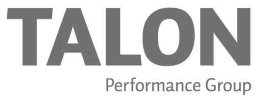For many professionals the resignation process is a time of great distress as they dread having to tell their current employer, their peers, their partners that they have decided to part ways. This is especially true when one has worked with and at the same organization for a substantial period of time or when a lawyer leaves one type of organization for the same type of organization. i.e. law firm to law firm or in-house to in-house. Even when you know the career choice you are making is the best decision for you, human nature can cause emotion on both sides of the table whenever a relationship ends.
How does one part ways appropriately, professionally and efficiently? Many people approach this critical career juncture flying by the seat of their pants and mimicking what they have seen others do incorrectly. Never use the resignation process as an opportunity to “get back at” or “let them know” all that is wrong. It just doesn’t matter, and your reputation is far too valuable to risk for the one moment of satisfaction in bringing up all the seeming injustices you suffered.
Giving your resignation should be simple, thoughtful and carefully planned. This will reduce your stress and cause you to focus on the one and only thing that is really critical: Making the transition of your departure as smooth as possible for everyone involved. Your only focus should be leaving your old organization in the best position you can while you mentally begin to focus on your new organization.
Before exploring best practices in resigning and transitioning, one helpful fact to remember is that people and organizations tend to follow a predictable, three-stage pattern when faced with a resignation:
1. They’ll be in shock. This can often take the form of surprise and anger.
2. They’ll start to probe. “Who; What; Where; Why”
3. They’ll make you an offer to try and keep you from leaving.
It may take various amounts of time for the three stages to run their course, but most of the time; these steps will run their course. Knowing this pattern can help one prepare for effectively handling the resignation process.
What Must Be Considered?
The Counter Offer.
First, remember that giving notice means you are crossing a point of no return. Your decision should be final and non-negotiable if you want to maintain your credibility. Whatever reasons had you explore opportunities outside your organization in the first place still and will exist during and after your departure. Don’t waste your or their time by giving false hope that they can do something to get you to stay. Once you give your notice, the relationship dynamic has shifted and trust is lost.
Timing.
When do you give notice? The general answer is as soon as possible after you have tendered an official acceptance of a new offer of employment. It is worth strategically considering the timing of your resignation. You may consider: What matters are you involved in that need transitioning? What events are happening at the new organization? What is happening with your clients? What is the time of year? Make sure your resignation properly coincides with your start date at the new organization and allows time for you to take a break in between positions should that be desired.
Whatever the timing factors, follow your organization’s exit protocol. This is true no matter how close you are to some of your co-workers, peers, subordinates; Don’t leave a bad impression by ignoring this rule and talking with people out of turn. Be prepared to be exited out of the building upon tendering your notice.
Presenting the Resignation.
With few exceptions, you should do this in a face-to-face meeting. Thus it is your responsibility to arrange a meeting, and if you arrange the meeting, it is your responsibility to have an agenda for it. Short and sweet messaging at this point is appropriate. “I appreciate the opportunity I have had here. I have made a commitment to join another organization and will begin working with them in three weeks. Let’s discuss how we can make my transition as smooth as possible.” It is beneficial if you have created an agenda which outlines 3-8 items that need to be wrapped up during your transition and your plan to get them done.
Exit Interviews.
For some, it may be tempting to lay it all on the line as they have long dreamed of doing. Should you be asked to do an exit interview, be polite and answer the questions in a simple, fair and true manner with short answers. After all, what is in it for you if you air your grievances?
Additional Tips to Support you during Your Transition
- Call a close friend and let him or her know you gave notice. It is often beneficial to talk to a welcoming voice after this stressful interaction. Don’t talk about your resignation with peers.
- Consider the timing of removing your personal items. It is much easier to remove your personal items early in the process, rather than leave this task to the last minute.
- Make sure that you have ALREADY removed any personal items from your laptop or PC, and have taken home those files in some manner – remember copies of all your reviews, testimonials and recommendations. Only take what is rightfully yours.
- Focus on legitimately wrapping up your business and/or transferring your projects or responsibilities to your co-workers or replacement as assigned. Even if you don’t get much direction, at least write it all up and document your work so that it can easily be understood once you are gone.
Do not change your professional manners as you transition. Think about your future network, references, and what people will say about you. For the experienced professional, the last impression can be more important than the first impression.
*Note: Group and portable practice moves may require exception to the timing aspects of a transition.
